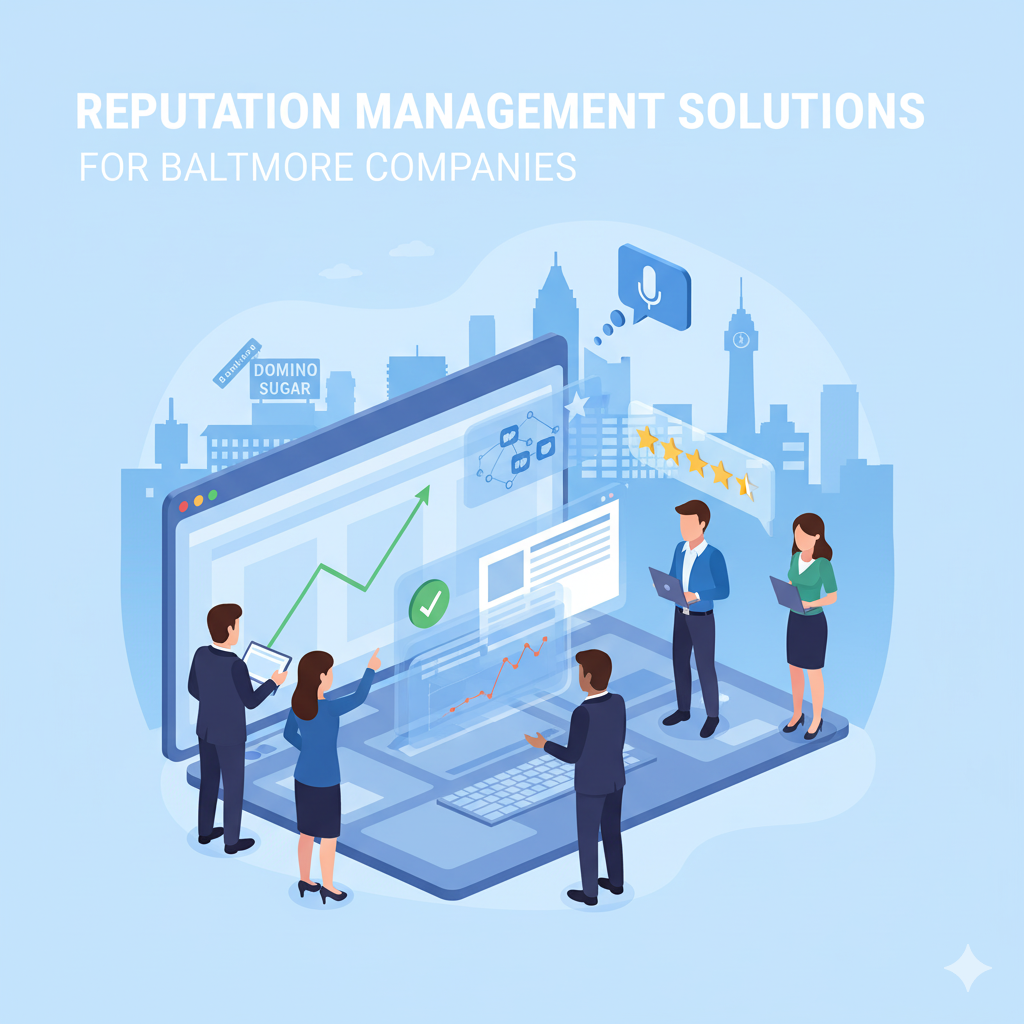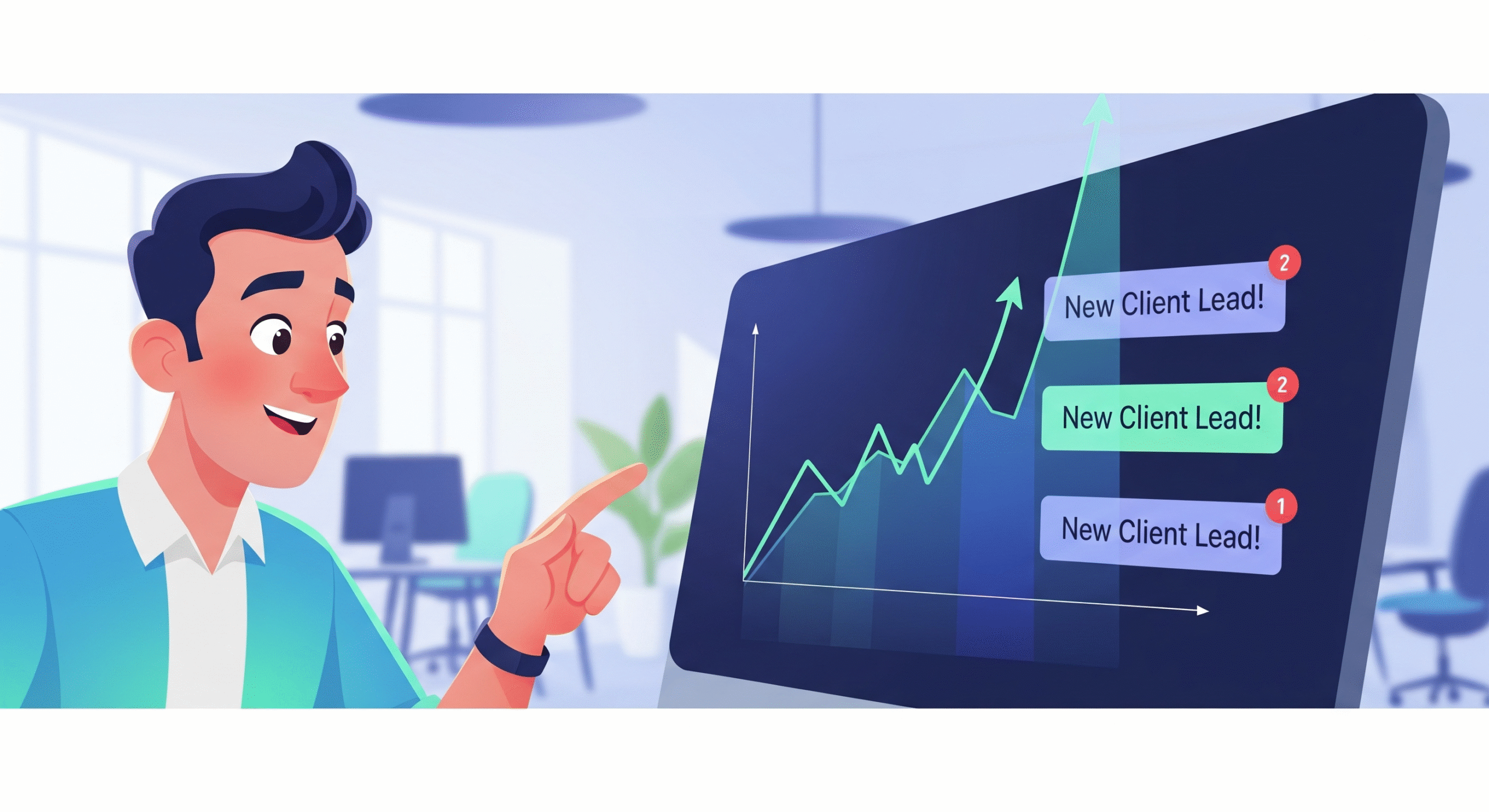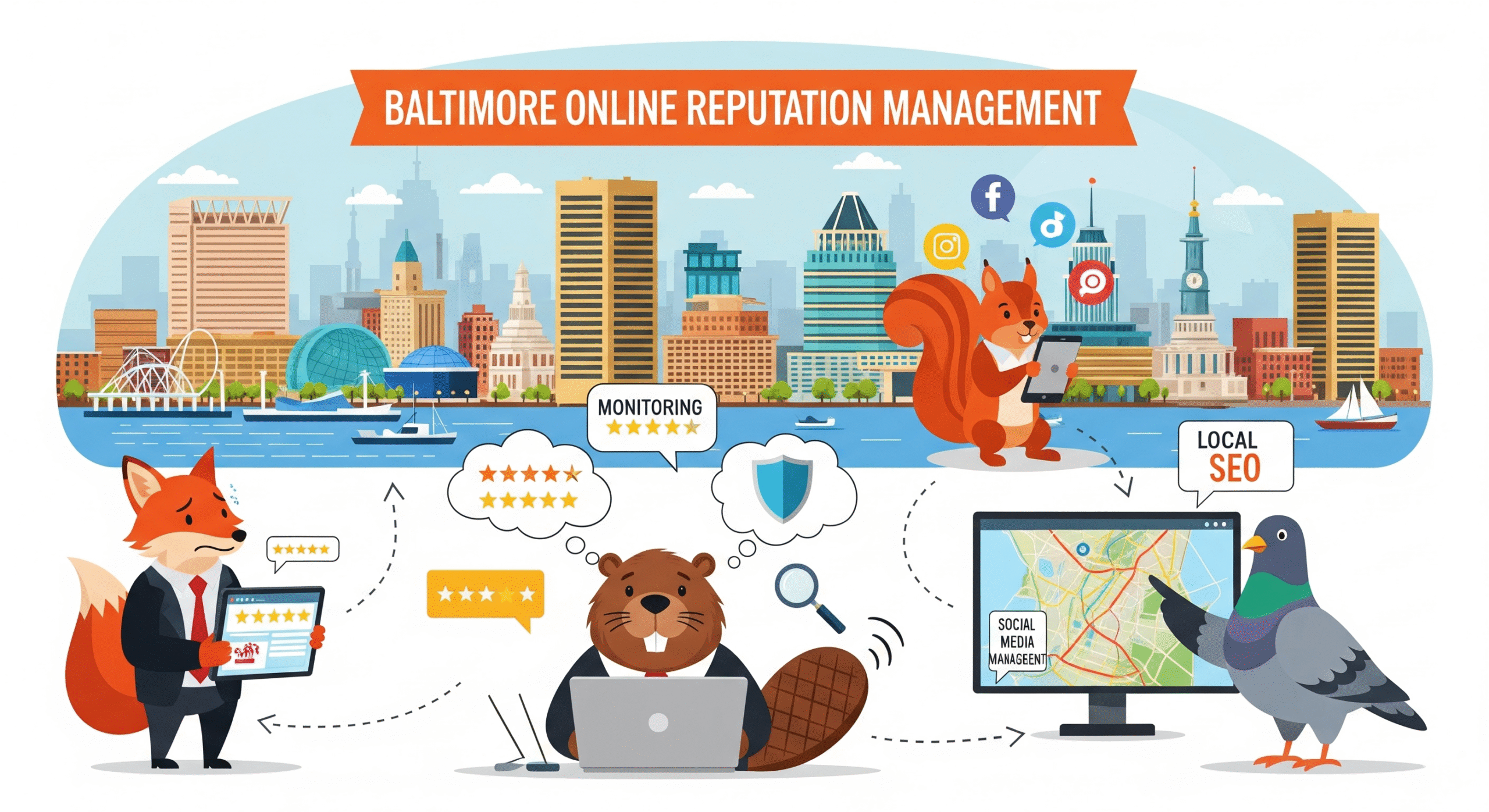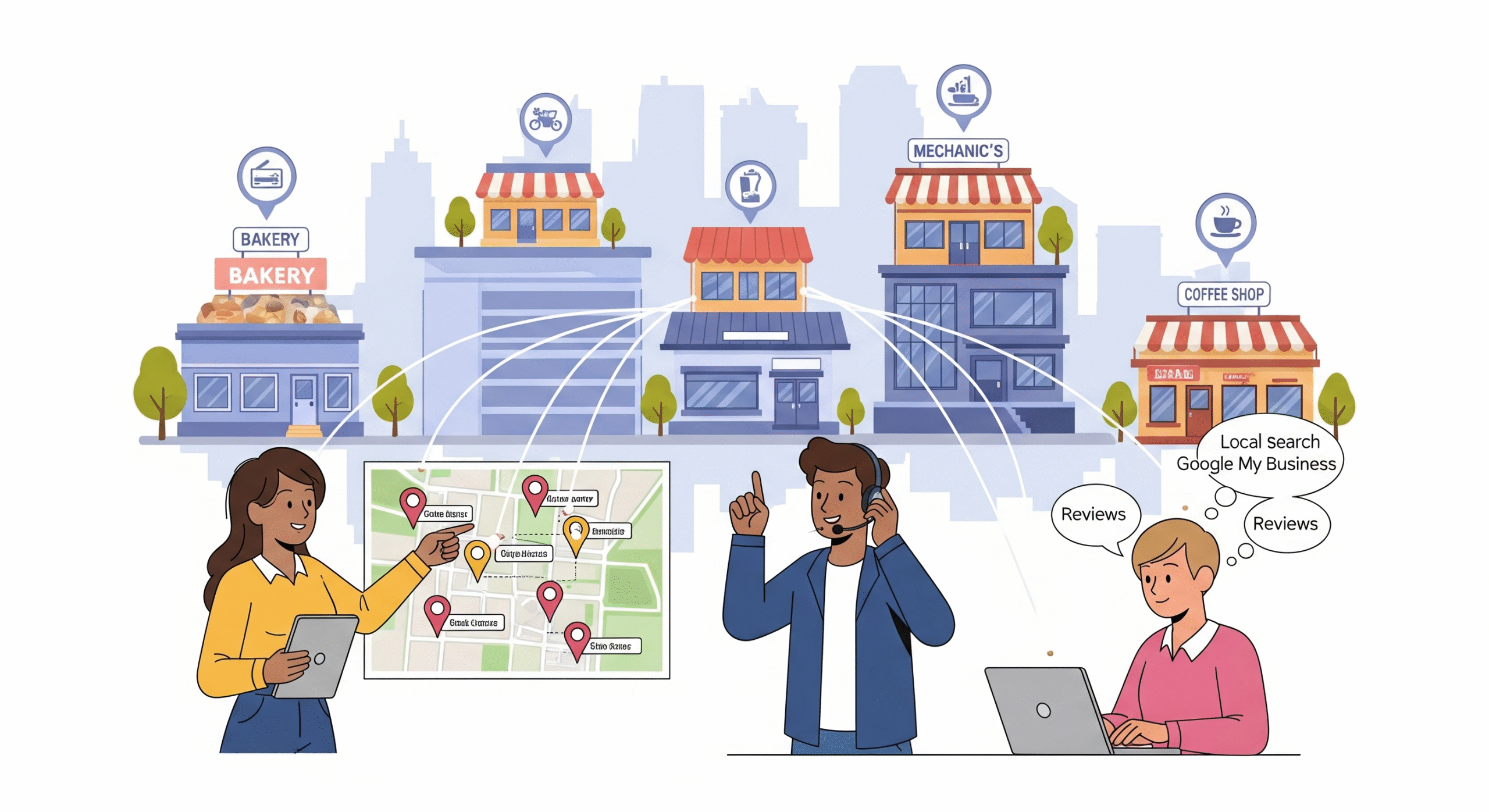Pay-per-click (PPC) advertising is one of the fastest ways to bring potential customers directly to your business. But not all PPC campaigns deliver results—some generate traffic that never converts, while others bring in the wrong audience altogether. The real success of PPC lies in generating high converting PPC leads that actually turn into paying customers. In this guide, let’s explore effective strategies to maximize your PPC campaigns and capture leads that matter. 🚀 1. Target the Right Keywords The foundation of PPC success lies in keyword targeting. Instead of going broad, focus on high-intent keywords that reflect a buyer’s readiness. For example, terms like “buy web design services” or “best SEO agency near me” show stronger purchase intent compared to general searches. Using long-tail keywords can also filter out unqualified clicks and improve lead quality. 2. Craft Compelling Ad Copy Your ad copy is the first thing users see, so it should speak directly to their needs. Use action-driven phrases, highlight benefits, and address pain points. For instance: Including urgency words like “limited offer” or “book now” can further boost click-through rates. 3. Optimize Landing Pages Even the best ad won’t convert if the landing page doesn’t deliver. Make sure your landing page is: A/B testing different landing page layouts can help discover what resonates most with your audience. 4. Use Audience Targeting Modern PPC platforms like Google Ads and Meta Ads allow precise audience targeting. You can filter users by location, age, interest, or even remarket to those who previously visited your website. By narrowing down to your ideal customer profile, you spend less on irrelevant clicks and more on quality prospects. 5. Leverage Ad Extensions Ad extensions such as site links, call buttons, or structured snippets provide extra information and increase ad visibility. This not only improves ad quality score but also boosts chances of getting clicks from users who are genuinely interested in your offer. 6. Monitor and Refine Campaigns Successful PPC campaigns require continuous monitoring. Track key metrics like CTR (Click-Through Rate), CPC (Cost per Click), and conversion rate. If certain keywords or ads are underperforming, pause them and allocate more budget to top-performing ones. Final Thoughts Generating high converting PPC leads is not about spending more—it’s about spending smarter. By focusing on intent-driven keywords, compelling ad copy, optimized landing pages, and precise targeting, businesses can ensure their PPC campaigns bring measurable results. If you’re ready to take your PPC campaigns to the next level, investing in expert strategies can help you attract leads that truly convert. 🎯 WebsiteSeoLeads
Finding Quality Website Design Leads for Your Business
If you run a web design agency, you already know that getting consistent, high-quality leads is one of the toughest challenges. Without the right flow of potential clients, even the best design skills won’t help your business grow. The real question is: how do you find website design leads that are not only interested but also ready to invest in your services? Let’s break it down step by step. 1. Know Your Ideal Client 🎯 Before chasing leads, you need to define who you want to work with. Are you targeting small local businesses that need their first website? Or mid-sized companies looking for a redesign? Once you know your audience, your lead generation strategies become sharper and more effective. 2. Use Content Marketing to Attract Clients ✍️ Potential clients often search online for tips like “best website design for small businesses” or “affordable web design services.” If you create blog posts, guides, and case studies around these topics, you can attract organic traffic and convert readers into leads. Adding a clear call-to-action like “Book a free consultation” works wonders. 3. Leverage LinkedIn and Social Media 🌐 LinkedIn is a goldmine for website design leads. Business owners and decision-makers are active there, making it easier to connect with them directly. Share your design work, client testimonials, and industry tips. Social proof builds trust and opens doors for conversations. 4. Try PPC Campaigns for Targeted Reach 📈 Running PPC ads on Google or social platforms like Facebook allows you to target specific industries or locations. For example, you can run ads targeting “restaurant owners in Dallas” who may need a new website. This direct targeting brings in high-quality leads ready to take action. 5. Partner with Other Agencies 🤝 Sometimes, marketing agencies or IT firms get clients who also need web design services but don’t offer them directly. Building partnerships with these companies can provide a steady stream of referrals without you having to chase cold leads. 6. Use Lead Buying Platforms 📊 If you want a faster way, you can buy website design leads from trusted platforms. These leads are already pre-screened, saving you time on prospecting. While you’ll need to verify their quality, this method can give you a quick boost in new client opportunities. Final Thoughts 💡 Finding quality website design leads isn’t about chasing everyone. It’s about knowing your audience, building trust, and using the right mix of inbound and outbound strategies. With content marketing, social media, PPC, partnerships, and smart lead purchasing, your agency can secure clients that value your work and bring long-term growth. WebsiteSeoLeads
Reputation Management Solutions for Baltimore Companies
In today’s digital world, your company’s reputation can make or break your success. Customers in Baltimore are constantly searching online before making decisions, and what they find about your business influences whether they choose you or your competitor. That’s where reputation management solutions come in. Why Reputation Matters for Baltimore Businesses From local restaurants to law firms and service providers, Baltimore companies rely heavily on positive reviews, strong brand visibility, and community trust. A single negative review left unattended, or a lack of online presence, can create doubts in potential customers’ minds. On the other hand, a solid reputation builds credibility and helps you stand out in a competitive market. Key Reputation Management Strategies for Baltimore Companies 🌟 Online Review Monitoring and ResponseActively track reviews on Google, Yelp, Facebook, and industry-specific sites. Timely, professional responses—both to positive and negative feedback—show that your business cares about its customers. 🌟 Local SEO for Baltimore VisibilityOptimizing your business listings ensures your company appears when people in Baltimore search for services you provide. Correct business details, local keywords, and consistent citations strengthen trust. 🌟 Social Media Reputation BuildingSocial platforms are powerful for building trust. Sharing customer success stories, engaging with the Baltimore community, and maintaining a professional image helps strengthen your online presence. 🌟 Crisis Management PlanningEvery business faces challenges. Having a strategy to address sudden negative publicity or customer complaints quickly can prevent long-term damage. 🌟 Content Marketing for Positive BrandingPublishing blogs, success stories, and local community involvement news creates a positive narrative about your brand. It not only improves your image but also builds connections with Baltimore customers. Benefits of Reputation Management for Baltimore Companies ✅ Increased trust and credibility with local customers✅ Better rankings on search engines through strong reviews and visibility✅ Stronger customer loyalty and repeat business✅ Protection against harmful or false negative content Final Thoughts Reputation management isn’t just about protecting your company’s image—it’s about building long-term trust with your Baltimore audience. By monitoring reviews, optimizing your local presence, and engaging with the community, you can ensure that your business maintains a strong and positive reputation. If you’re a Baltimore company looking to strengthen your online presence and build trust, investing in reputation management solutions is one of the smartest steps you can take. WebsiteSeoLeads
Proven Approaches to Secure Local SEO Clients
Securing local SEO clients can be one of the most rewarding opportunities for agencies and freelancers in the digital marketing space. Unlike national or global campaigns, local SEO focuses on helping businesses get noticed in their immediate communities. For restaurants, law firms, home service providers, or retail shops, being visible in local search results is the key to attracting foot traffic and generating leads. But how do you consistently land these clients in a competitive market? Let’s break down some proven approaches that can help you secure more local SEO clients. 1. Build Trust With Local Case Studies Potential clients want to see results. Create case studies showcasing how you helped local businesses rank higher on Google Maps, improve their reviews, or increase website visits. Highlight measurable results such as “30% increase in local leads within 60 days.” Real success stories build confidence and credibility. 2. Leverage Networking and Community Events Face-to-face connections are still powerful. Attend local chamber of commerce meetings, business expos, or networking events. Many small business owners look for reliable local partners instead of outsourcing to big national agencies. By positioning yourself as a local SEO expert, you gain trust faster. 3. Offer Free Local SEO Audits A simple audit of a company’s Google Business Profile, local citations, or on-page SEO can open doors. Offering a free audit shows your expertise while giving the business owner immediate value. It’s often easier to close deals once clients see exactly what needs improvement. 4. Target Local Niches With Tailored Pitches Not every industry is the same. A local dentist has different SEO needs than a landscaping company. By tailoring your pitch to each niche—showing knowledge of their industry challenges—you increase your chances of landing the client. Industry-specific strategies set you apart from generic SEO providers. 5. Use Referrals and Testimonials Happy clients are your best marketers. Encourage existing local SEO clients to refer you to other businesses in their network. Even offering a small referral incentive can lead to consistent new opportunities. Testimonials on your website and Google profile also boost trust. 6. Optimize Your Own Local SEO If you’re selling local SEO services, your agency should rank locally too. Ensure your Google Business Profile is updated, collect positive reviews, and optimize for keywords like “local SEO services near me.” When potential clients search for SEO help in their city, your own ranking will prove your capabilities. Final Thoughts Securing local SEO clients doesn’t happen overnight—it takes persistence, relationship-building, and proof of results. By combining strategies like networking, tailored pitches, free audits, and showcasing case studies, you can establish yourself as the go-to expert for businesses looking to dominate their local markets. With the right approach, local SEO clients not only provide consistent work but also long-term partnerships that help your agency grow sustainably. 🚀 WebsiteSeoLeads
Smart Methods to Gain SEO Clients Without Cold Calling
Cold calling has become an outdated and often ineffective way to bring in new clients for SEO services. Today’s business owners are busy, selective, and more likely to engage with agencies that prove their value before pitching. If you want to attract SEO clients without spending hours on the phone, here are some smart methods that work in the digital era. 1. Leverage Content Marketing One of the best ways to attract clients is by showing expertise. Create blog posts, guides, or case studies that highlight your SEO knowledge. When potential clients search for answers, your content positions you as the solution. For example, a case study about how you improved traffic for a small business can directly appeal to similar companies looking for help. 2. Build a Strong LinkedIn Presence LinkedIn is a powerful platform for B2B networking. Regularly share insights, SEO tips, and industry updates to show credibility. Instead of sending cold pitches, engage with posts from business owners in your target niche. Thoughtful comments and consistent visibility can naturally lead to conversations and inquiries. 3. Offer Free Website Audits A free SEO audit provides immediate value and opens the door for a paid partnership. Tools like Ahrefs, SEMrush, or even Google tools can help you generate a quick analysis. Send prospects a short report with a few key issues and solutions. When they see the gaps in their SEO, they are more likely to trust your expertise and hire you. 4. Use Referrals and Testimonials Happy clients are your best marketers. Ask satisfied customers to refer you to others in their network or provide testimonials for your website and social profiles. Word-of-mouth and social proof reduce the need for hard selling, as businesses feel more comfortable working with a trusted provider. 5. Run Targeted PPC Campaigns Instead of cold calling, invest in ads targeting businesses searching for SEO services. Google Ads or LinkedIn Ads can place your services in front of decision-makers who are already interested. When your landing page showcases results and testimonials, leads are more likely to convert. 6. Network Through Online Communities Join groups on platforms like Facebook, Reddit, or niche business forums where entrepreneurs ask about SEO. By providing helpful, non-sales answers, you can attract attention and generate leads. People respect experts who give advice without pushing for a sale. Final Thoughts Getting SEO clients no longer requires endless cold calls. By using smarter methods like content marketing, LinkedIn networking, free audits, referrals, PPC campaigns, and community engagement, you can build a steady flow of high-quality leads. The key is to focus on value first and sales second—when prospects see your expertise, they’ll come to you. WebsiteSeoLeads
Effective Ways to Buy Web Design Leads for Agencies
Running a web design agency is exciting, but finding a steady flow of clients can often be the hardest part. You may have a team of skilled designers, strong past projects, and a solid portfolio — but without consistent leads, growth slows down. That’s where buying web design leads comes in. When done the right way, it can save time, boost sales, and keep your pipeline full. Let’s explore some effective ways to buy web design leads that actually convert. 1. Choose a Trusted Lead Provider Not all lead sources are created equal. Look for providers who specialize in web design and digital marketing leads rather than generic directories. Trusted providers deliver leads that are pre-qualified, meaning the businesses already have an interest in web design services. 2. Focus on Quality Over Quantity It’s tempting to go for cheap, bulk leads, but quality should always come first. One high-quality lead that’s genuinely interested in your services is worth more than 50 unresponsive contacts. Ask the provider how they source their leads and whether they verify them before sending them to you. 3. Target Your Niche Every web design agency has a unique style or specialty. Whether you focus on eCommerce stores, local small businesses, or corporate websites, buying leads that match your niche improves your chances of conversion. The more specific the targeting, the better your ROI. 4. Look for Exclusive Leads Shared leads are often sold to multiple agencies, making it harder to stand out. Exclusive leads, on the other hand, are given only to you, which means less competition and a higher chance of closing the deal. 5. Combine Purchased Leads With Nurturing Buying leads is just the first step. To convert them into paying clients, follow up with personalized emails, quick responses, and clear presentations of your past work. A nurturing process helps build trust and positions your agency as the right choice. 6. Track and Measure Results Keep track of where your purchased leads come from and how many actually convert into clients. This will help you identify the most effective providers and refine your buying strategy over time. Final Thoughts Buying web design leads can be a smart move for agencies looking to grow without spending endless hours on cold outreach. The key is to focus on trusted providers, prioritize quality over quantity, and nurture every lead into a long-term client. With the right approach, your agency can enjoy a steady flow of projects and a stronger bottom line. WebsiteSeoLeads
Where to Find Reliable Website Design Leads for Your Agency
Running a web design agency isn’t just about creating stunning websites—it’s about consistently finding new clients who need your services. Many agencies struggle with one core challenge: generating reliable website design leads that convert into paying clients. Without a steady flow of leads, scaling becomes nearly impossible. If you’re wondering where to find reliable website design leads for your agency, this guide will walk you through the most effective strategies and resources. Why Website Design Leads Are So Valuable Every business today needs a professional website. From startups to established companies, a strong online presence is no longer optional—it’s essential. This makes website design a high-demand service. However, competition is equally high. Reliable leads ensure that your agency focuses on prospects who are not just browsing, but are genuinely interested in your services. Key Benefits of Quality Website Design Leads Top Places to Find Website Design Leads Now let’s explore where you can actually find reliable website design leads that align with your agency’s goals. 1. Lead Generation Services One of the most effective ways is to partner with trusted lead generation platforms like Website SEO Leads. These services provide pre-qualified leads that match your target audience, saving you countless hours of cold outreach. 👉 Check out Website SEO Leads for targeted web design leads that help your agency grow faster. 2. LinkedIn Prospecting LinkedIn is a goldmine for B2B web design leads. By connecting with decision-makers such as CEOs, marketing managers, and startup founders, you can directly pitch your services. 3. Online Business Directories Platforms like Clutch, UpCity, and even Google Business Profiles can help you connect with companies seeking web design services. Many businesses list their needs publicly, making it easier for you to reach out. 4. PPC and SEO Campaigns Running targeted PPC campaigns on Google or social media ensures your agency shows up when businesses search for “website design services.” Similarly, investing in SEO allows you to rank for terms like “web design agency near me” or “affordable web design services.” 5. Freelance Job Boards Websites like Upwork, Fiverr Pro, and Freelancer attract thousands of businesses every day looking for website design support. While competitive, these platforms can be a consistent source of leads if you build a strong profile. 6. Local Networking & Business Groups Joining local chambers of commerce, networking events, or industry meetups in your city can open doors to business owners in need of web design. Face-to-face interactions often build stronger trust than online outreach. 7. Social Media Marketing Platforms like Instagram and Facebook are powerful for showcasing your design work. Posting before-and-after website redesigns, client testimonials, and case studies can naturally attract inbound leads. 8. Referral Programs Happy clients are your best lead source. Encourage referrals by offering discounts or incentives when existing customers bring in new clients. Qualities of Reliable Website Design Leads Not all leads are worth your time. To ensure reliability, here’s what you should look for: How Website SEO Leads Helps Agencies At Website SEO Leads, we specialize in connecting web design agencies with ready-to-convert leads. Instead of chasing unqualified prospects, we deliver leads that have genuine interest in your services. Our Process This means you can focus more on designing websites and less on chasing prospects. Final Thoughts Finding reliable website design leads is no longer about sending thousands of cold emails or waiting for referrals. With the right mix of strategies—especially leveraging trusted lead generation platforms like Website SEO Leads—your agency can build a predictable client pipeline. Instead of spending valuable time chasing unqualified prospects, focus on scaling your agency with clients who already want what you offer. 👉 Start today with WebsiteSeoLeads and get access to reliable web design leads that help your agency grow faster.
Complete Online Reputation Management Services in Baltimore
In today’s digital world, your online reputation is just as important as the quality of your products or services. Whether you run a small local business or a growing company in Baltimore, customers often judge you based on what they find online. Reviews, social media mentions, and search results can make or break a brand’s credibility. That’s where complete online reputation management services in Baltimore come into play. Why Online Reputation Management Matters for Baltimore Businesses The internet has given every customer a voice. A single negative review, unanswered complaint, or false claim can quickly spread and damage your business image. On the other hand, a positive reputation builds trust, attracts new customers, and strengthens brand loyalty. For businesses in Baltimore, where competition is high across industries like hospitality, healthcare, retail, and professional services, reputation management ensures your brand stands out for the right reasons. Key Benefits of Reputation Management Common Online Reputation Challenges Businesses Face Many businesses in Baltimore struggle with online reputation because they don’t actively monitor or respond to customer feedback. Here are some common challenges: What Our Reputation Management Services Include At Website SEO Leads, we provide complete online reputation management services in Baltimore tailored to your industry. Our services go beyond just monitoring reviews—we help you build and maintain a strong, trustworthy image online. 1. Reputation Monitoring We track mentions of your business across Google, social media, review sites, forums, and local directories to ensure you always know what’s being said about your brand. 2. Review Management Our team helps you collect more positive reviews while responding to negative feedback in a professional manner that turns dissatisfied customers into loyal ones. 3. Search Engine Reputation Repair If negative content appears in search results, we use SEO strategies to push it down while promoting positive and accurate information about your business. 4. Social Media Reputation Control We manage brand presence across platforms like Facebook, Instagram, LinkedIn, and X (Twitter) to ensure your audience sees the right message. 5. Content Creation & Promotion High-quality blogs, press releases, and brand stories are published to highlight your expertise and drown out unwanted mentions. 6. Crisis Management If your business faces sudden negative publicity, we act fast to minimize the impact and protect your brand’s long-term reputation. Why Baltimore Businesses Trust Our Services Baltimore has a thriving business ecosystem, from small family-owned restaurants to fast-growing startups. What sets our services apart is our local expertise combined with global strategies. We understand the unique challenges businesses face in this city and customize our approach accordingly. Steps to Get Started with Reputation Management Getting started with online reputation management in Baltimore is simple. Here’s how we help you begin: Final Thoughts In a competitive market like Baltimore, your reputation is your biggest asset. By investing in complete online reputation management services, you can protect your brand, attract more customers, and maintain long-term success. Don’t wait until negative reviews or misinformation affect your business. Take control of your online image today with trusted reputation management solutions tailored to Baltimore businesses. 👉 Visit WebsiteSeoLeads to learn how we can help you protect and grow your brand reputation in Baltimore.
Local SEO Client Acquisition Made Simple for Small Agencies
Running a small agency comes with unique challenges—limited resources, smaller teams, and the constant pressure to bring in new clients. When it comes to SEO, especially local SEO, acquiring clients might seem like a tough job. But the truth is, with the right strategies, small agencies can win local SEO clients without massive budgets or cold calling. Let’s break it down step by step. Why Local SEO Clients Matter Local SEO is one of the fastest-growing digital marketing services. Businesses like restaurants, law firms, salons, clinics, and local contractors rely on Google Maps rankings and local search visibility to attract new customers. For agencies, this means a steady stream of potential clients who are actively searching for help with local rankings, reviews, and online presence. Step 1: Build a Strong Local Presence for Your Agency Before pitching local SEO to others, your agency should demonstrate its own visibility: When prospects see you ranking locally, they’re more likely to trust your services. Step 2: Use Referrals and Partnerships Instead of chasing cold leads, build partnerships with complementary businesses: Referrals often bring warm leads who are ready to invest in SEO services. Step 3: Leverage Case Studies and Testimonials Small agencies can’t always compete with big agencies’ scale, but you can showcase results. Share: Case studies help you stand out as results-driven, not just sales-focused. Step 4: Offer Free Local SEO Audits Business owners love seeing where they stand against competitors. Provide a free audit that highlights: This positions your agency as helpful and creates a natural opening to pitch your services. Step 5: Create Localized Content Marketing Publish blog posts, guides, and videos that target local businesses. For example: This content attracts clients searching for solutions in their own cities. Step 6: Use Paid Ads Wisely If your budget allows, run Google Ads or Facebook Ads targeting: Even a small ad budget can generate consistent leads. Step 7: Focus on Relationship Building Unlike big agencies that chase numbers, small agencies can win by being personal and attentive. This turns first-time clients into recurring monthly revenue. Final Thoughts Local SEO client acquisition doesn’t have to be overwhelming. By showing proof of results, leveraging partnerships, creating educational content, and offering free audits, small agencies can steadily grow their client base without resorting to endless cold calls. If your agency is ready to scale faster, explore lead generation services at WebsiteSeoLeads . We connect you with qualified leads who are already searching for SEO, PPC, web design, and digital marketing services—helping you focus on closing deals instead of chasing prospects.
Reputation Management Services for Local Business Growth
In today’s digital world, reputation is everything. For local businesses, a single review, social media comment, or online mention can influence whether customers choose to work with you or your competitors. That’s where reputation management services come in. These services help businesses monitor, manage, and improve their brand image so they can build trust, attract customers, and grow sustainably. Why Reputation Management Matters for Local Businesses Local businesses thrive on trust and word of mouth. When someone searches for a product or service, the first thing they do is check reviews. According to recent studies, more than 85% of consumers trust online reviews as much as personal recommendations. If your business has a negative or weak online presence, you could be losing customers without even knowing it. On the other hand, businesses that invest in reputation management can: Key Features of Reputation Management Services Professional reputation management services offer a range of strategies to protect and enhance your brand. These typically include: 1. Review Monitoring and Response Monitoring platforms like Google Business Profile, Yelp, and Facebook is essential. Reputation management services track new reviews, notify you quickly, and help craft professional responses. A timely, respectful reply can turn a negative review into an opportunity. 2. Review Generation Campaigns Getting more positive reviews helps balance out occasional negative ones. Services often implement automated systems like email and SMS follow-ups, encouraging happy customers to share their experiences online. 3. Search Engine Optimization (SEO) for Reputation A strong online presence pushes positive content to the top of search results. Reputation management often includes SEO strategies to highlight customer testimonials, case studies, and news articles that showcase your business positively. 4. Social Media Management Social platforms are public forums where customers can praise—or criticize—your business. Reputation services help manage your profiles, create engaging content, and respond to feedback quickly. 5. Crisis Management If your business faces a wave of negative reviews or bad press, having experts manage the situation ensures damage control. Reputation specialists know how to address issues transparently while protecting your brand. Benefits of Reputation Management for Growth Investing in reputation management services leads to measurable growth for local businesses. Here’s how: Choosing the Right Reputation Management Partner Not all reputation management services are the same. When selecting a provider, local businesses should consider: Final Thoughts Reputation management services are no longer optional—they are a necessity for local business growth. In competitive markets, customers turn to reviews and online impressions before making decisions. A single negative review might cost you business, but a well-managed reputation can generate trust, loyalty, and long-term success. If your local business is ready to strengthen its reputation, now is the time to invest in professional services. Building trust online means more customers walking through your doors tomorrow. WebsiteSeoLeads










